Shah Mosque, Isfahan | A Complete Visitor Guide
Isfahan, often referred to as "Nesf-e Jahan" (Half of the World), is a city with a long history, and the Shah Mosque (Masjid Imam) is right in the middle of it.
This mosque is like a symbol of the city, showing off how amazing Isfahan is. People from all over the world come to see this mosque, and we're here to tell you everything you need to know.
In this guide, we'll talk about the mosque's history, the way it looks, why it's important, and we'll give you some tips for your visit. Additionally, we'll introduce you to the attractions and experiences that await in the vicinity of this iconic site, helping you make the most of your journey to Isfahan.
Historical Background of Shah Mosque
The history of the Shah Mosque (Imam Mosque) is not only rich but also shrouded in intriguing stories and myths that add to its allure. This magnificent mosque is more than just a building; it's a living record of Isfahan's past and a testimony to the city's resilience through the ages.
The Shah Mosque (Masjed-e Emam) has seen Isfahan transform from a regional capital to a thriving center of trade, culture, and art. Its history mirrors the city's rise to prominence and its enduring significance in Iranian heritage.

Who Built the Shah Mosque?
The credit for building the Shah Mosque goes to Shah Abbas I, a ruler who left an indelible mark on Iran's history. He was known for his forward-thinking approach and his ambition to make Isfahan one of the world's most splendid cities. In commissioning the Shah Mosque, he aimed to create a place that would symbolize his legacy and the magnificence of his rule.
Shah Abbas I was so passionate about this mosque that he made a rule that no other building in Isfahan could be taller than the mosque's minarets. This law preserved the mosque's prominence in the city's skyline.
How Long Did It Take to Build the Shah Mosque?
The construction of the Imam Mosque was no small feat. It was a project that spanned approximately 18 years. During this time, the mosque went through various phases of development, and many skilled architects and artisans contributed their expertise to bring it to life. This dedication and time invested in the project exemplify the extraordinary effort that went into creating this architectural wonder.
Legend has it that there are hidden tunnels beneath the Shah Mosque that connect it to other significant sites in Isfahan. While this remains more in the realm of myth, it adds an element of mystery to the mosque's history and continues to intrigue visitors.
Shah Mosque Architectural Style and Design
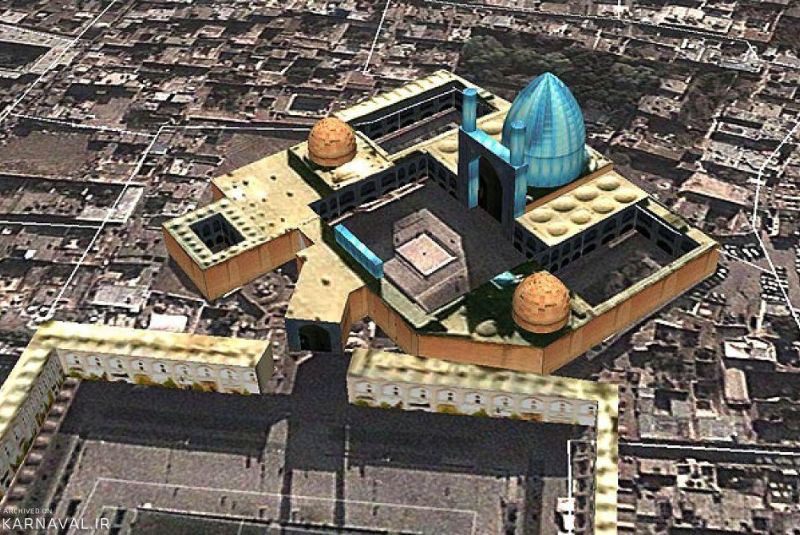
Shah Mosque's is a masterpiece of Islamic era architecture, showcasing the exquisite Safavid architectural style. The mosque's design harmoniously blends elements of Persian, Islamic, and Central Asian architecture, creating a unique and visually stunning structure. Its central courtyard, towering minarets, and impressive dome make it a prime example of Persian Islamic architecture.
Notable Architectural Elements
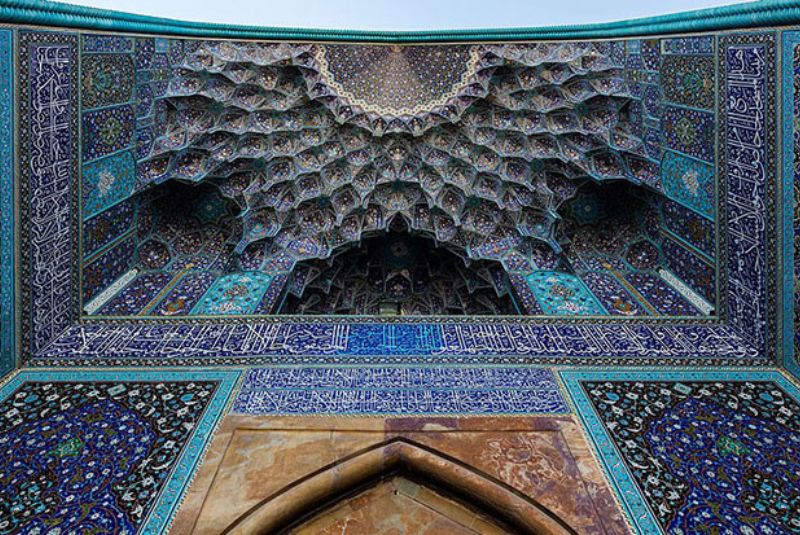
As you explore the Shah Mosque, you'll come across several distinctive architectural elements. One of the most striking features is the monumental entrance portal, adorned with intricate tilework and calligraphy. The towering minarets, each with its distinctive blue tile decoration, rise majestically, adding to the mosque's grandeur. The spacious central courtyard, surrounded by a stunning arcade with finely crafted columns and arches, is an inviting space for contemplation and worship.
Decorative Elements and Motifs

What truly sets the Shah Mosque apart is its breathtaking decorative elements and motifs. The mosque is adorned with a mesmerizing array of colorful tiles, mostly in shades of blue and turquoise, reflecting the classic Persian style. The intricate floral and geometric patterns, alongside Quranic inscriptions, grace the interior and exterior, creating a captivating play of light and color.
The geometric patterns and motifs on the tiles have a purpose beyond aesthetics. They were designed to help worshipers focus during their prayers, as the repetition and symmetry of the designs have a calming effect.
Materials Used in Construction
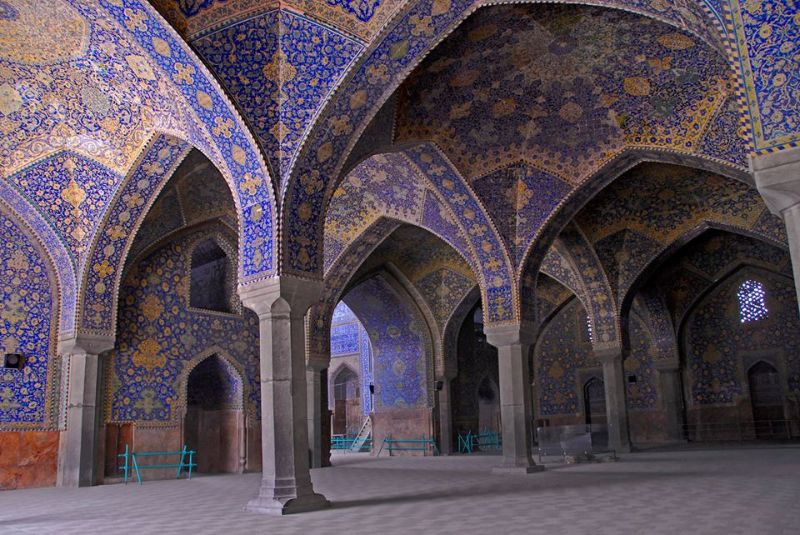
The construction of the Shah Mosque utilized a variety of high-quality materials. The primary material used for its walls and dome is brick, which was covered with finely crafted tiles. The blue tiles, which are a signature feature, were specifically created for the mosque. The dome, an architectural marvel in itself, was constructed using a double-shell design, with a layer of space between the two shells for added stability and insulation.
How big is the Shah Mosque?
The mosque covers a substantial area, with its central courtyard spanning approximately 70 meters by 40 meters. Its massive central dome, which dominates the skyline, rises to an impressive height of around 53 meters (175 feet) above the ground. This dome is flanked by two towering minarets, each reaching a height of about 48 meters (157 feet).
The size of the central courtyard allows for gatherings of significant numbers of worshipers, and it also serves as a pleasant space for contemplation and social interaction.
Why is the Shah Mosque important?
The Shah Mosque has deep religious roots and serves as a place of worship and reflection for the people of Isfahan and beyond. The mosque is a center of religious activity, hosting Friday prayers and other significant religious ceremonies. Its sacred ambiance and stunning architecture create an environment conducive to spiritual connection, where worshipers can find solace and inspiration.
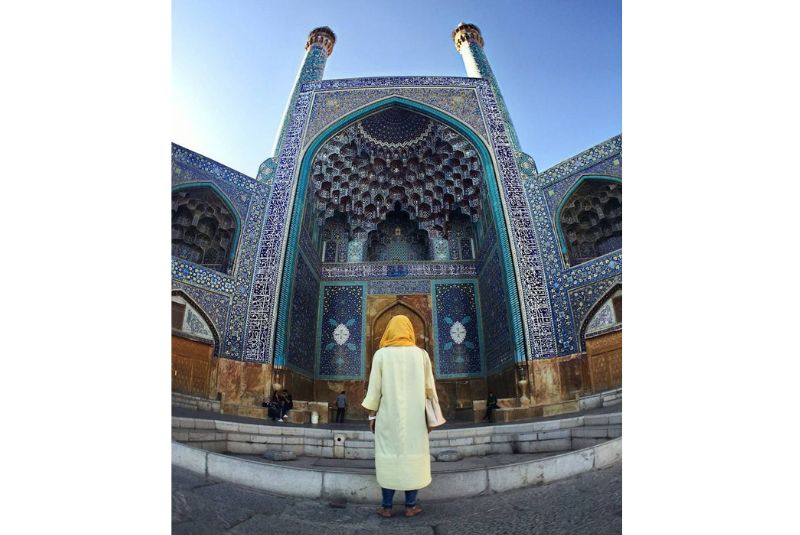
In the realm of politics, the Shah Mosque in Isfahan holds an essential place in the history of Isfahan and Iran. Its construction during the reign of Shah Abbas I symbolized the city's transformation into a powerful and influential capital of the Safavid Empire. The mosque's prominent location and impressive architecture were strategic choices, reflecting the political ambitions of the Shah.
The Shah Mosque played a role in diplomacy during the 17th century. When European envoys visited Isfahan, the mosque was often a venue for important meetings and negotiations, emphasizing its role in political history.
Tips for Visiting Shah Mosque
Location and Address of the Shah Mosque
The Shah Mosque is conveniently situated at the heart of Isfahan, making it easily accessible. The precise address is as follows:
Naqsh-e Jahan Square, Isfahan, Iran
Entrance Fees
Visiting the Shah Mosque typically involves an entrance fee, which helps in the preservation and maintenance of this historic site. Generally, domestic visitors are charged around 5,000 tomans, while foreign tourists are typically required to pay about four euros. These entrance fees of Shah Mosque play a vital role in supporting the ongoing conservation and upkeep of the mosque.
Visiting Hours
The Shah Mosque typically observes regular visiting hours, but it's important to note that these hours may change seasonally or due to specific events. With the exception of Fridays, days of mourning, and Itikaf, it's recommended to verify the visiting hours for each half of the year, as they could differ.
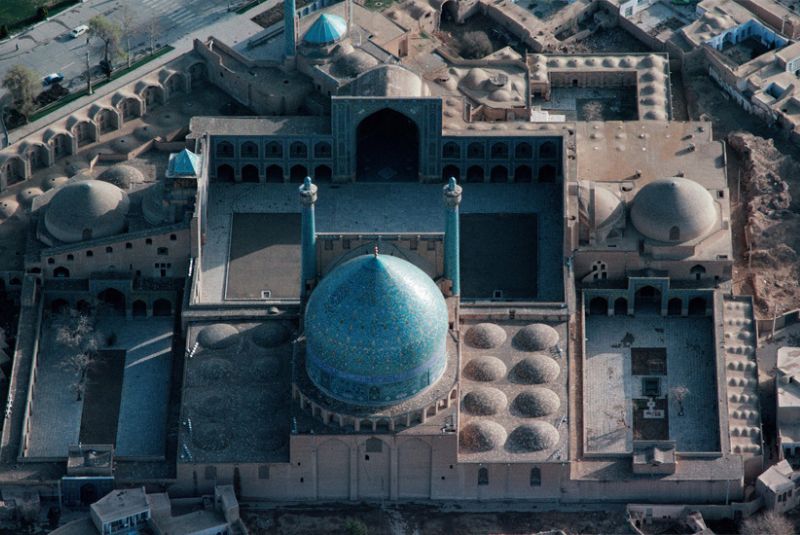
Dress Code and Etiquette
When visiting the Shah Mosque, it's essential to be respectful of the religious and cultural significance of the site. Here are some tips for dress code and etiquette:
- Dress modestly: Both men and women should wear clothing that covers their arms and legs. Women are often required to cover their hair with a scarf or shawl.
- Remove your shoes: Before entering the prayer hall, you'll need to remove your shoes. It's a sign of respect for the sacred space.
- Maintain a respectful demeanor: Keep your voice low, and avoid loud conversations. This is a place for quiet contemplation and worship.
Best Times to Visit Shah Mosque
To make the most of your visit to Shah Mosque in Isfahan, it is better to travel during spring and the fall. You should also consider the following times in visiting Shah Mosque:
- Mornings: The early hours are usually less crowded, offering a more peaceful and contemplative atmosphere.
- Weekdays: If possible, plan your visit on a weekday, as weekends tend to be busier with both locals and tourists.
- Special occasions: Attending during religious festivals or special events can provide a unique cultural experience.
Guided Tours an Local Guides
Joining a guided tour can provide valuable insights into the mosque's history, architecture, and cultural significance. Guides can offer a deeper understanding of the site's importance and can help you appreciate its details.
Some local guides are passionate about sharing their knowledge and stories about the Shah Mosque. Engaging with them can enhance your visit and provide a deeper understanding of the site's history and significance.
Must-Sees Around Shah Mosque
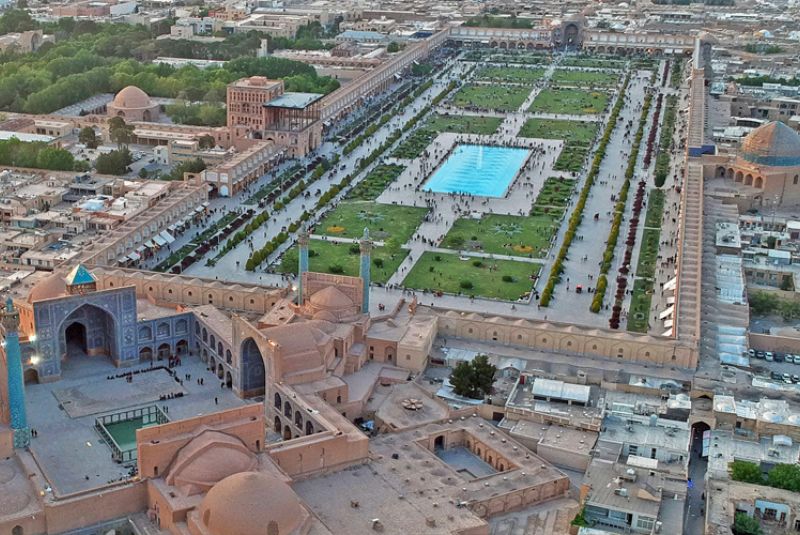
While the Shah Mosque is a major highlight of Isfahan, the area around it is rich in historical and cultural treasures. Here is a list of nearby points of interest and a brief description of each attraction:
- Naqsh-e Jahan Square: A UNESCO World Heritage Site, this grand square is one of the largest in the world. It's surrounded by historical buildings, including the Ali Qapu Palace, Sheikh Lotfollah Mosque, and Qeysarie Gate. The square is a hub of activity and a prime spot for people-watching, shopping, and experiencing local culture.
- Ali Qapu Palace: A six-story palace on the western side of Naqsh-e Jahan Square. Known for its stunning music hall and its elevated terrace offering panoramic views of the square and the city.
- Sheikh Lotfollah Mosque: A masterpiece of Safavid architecture with a delicate dome and stunning tilework. Its interior is a mesmerizing display of color and design.
- Qeysarie Gate: The historic entrance to the Grand Bazaar of Isfahan. It's a fusion of architecture and commerce, where you can shop for traditional Iranian goods.
- Sheikh Lotfollah Mosque: Located on the eastern side of Naqsh-e Jahan Square. A smaller but equally exquisite mosque with intricate tilework and a unique architectural design.
- Chehel Sotoun Palace: A historical pavilion surrounded by a beautiful garden with reflecting pools. It features 20 slender wooden columns, giving it the name "Forty Columns Palace."
- Jolfa District: A historic Armenian quarter in Isfahan, known for its unique architecture and Vank Cathedral. The Vank Cathedral is famous for its frescoes and artifacts, offering a different cultural perspective.
- Si-o-se-pol Bridge: Also known as the "Bridge of 33 Arches," it's a picturesque bridge crossing the Zayandeh River. The bridge's arches create a stunning reflection on the river, making it a popular spot for photography.
Restaurants and Cafes Around Shah Mosque

Many restaurants and tea houses around the Shah Mosque offer cozy seating on Persian-style rugs and cushions, providing a comfortable and authentic dining experience. Here are some dining options and recommendations for savoring local cuisine:
- Naghshe Jahan Traditional Restaurant
- Shahrzad Restaurant
- Miras Cafe Gallery
- Meydoon Café
- Azadegan Tea house and Dizi place
- Bazaar-e Bozorg Restaurants
Recommendations for Local Cuisine
- Joojeh Kebab: Don't miss trying the local version of grilled chicken kebabs, known as "Joojeh Kebab." They are marinated in saffron and other flavorful spices, creating a delectable taste.
- Biryani: Isfahan is famous for its Biryani, a flavorful rice dish often mixed with lamb, chicken, or vegetables and spiced with saffron.
- Gaz: Treat your sweet tooth with "Gaz," a traditional Persian nougat made with rosewater and pistachios. It's a popular local dessert.
- Fesenjan: If you're looking for something unique, try "Fesenjan." It's a rich stew made from pomegranate paste, ground walnuts, and chicken, creating a delightful combination of sweet and savory flavors.
Nearby Hotels and Guesthouses
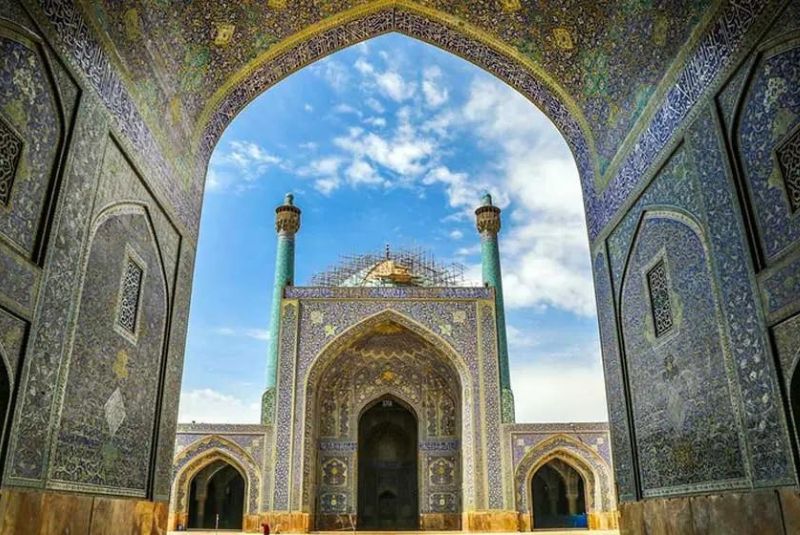
Isfahan offers a range of accommodation options, including hotels and guesthouses that are conveniently located near the Shah Mosque (Masjed-e Emam). Here are some recommendations:
- Abbasi Hotel
- Kianpour Historical House
- Ali Qapu Hotel
- Parsian Kowsar Hotel
Isfahan also has a few hostels that are budget-friendly and suitable for travelers looking for affordable accommodation and a social atmosphere.
Bottom Line
We encourage you to to visit the Shah Mosque in Isfahan and see it for yourself. This remarkable site serves as a convergence of history, culture, and architecture, providing a window into the rich heritage of Isfahan and Iran. With its undeniable charm and historical significance, the Shah Mosque promises an unforgettable and enriching experience.
Share your story!
Comment below and let us know about your Experience.
Your story inspires others!


Comment
Leave a Comment